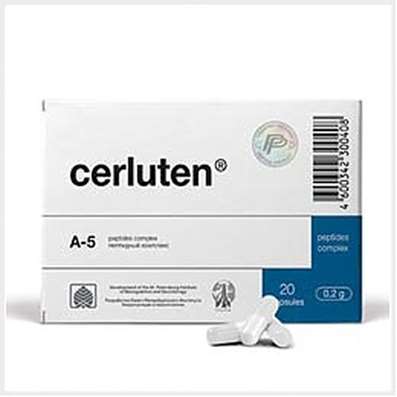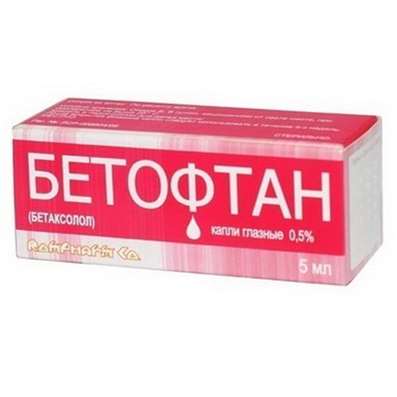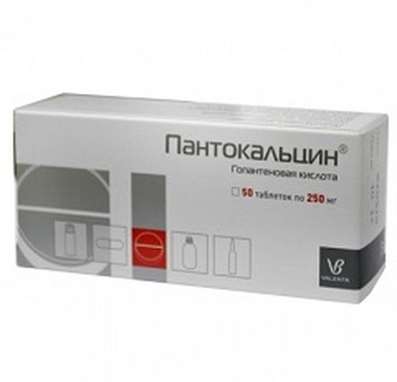Instruction for use: Donormyl
I want this, give me price
Dosage form: film coated tablets
Active substance: Doxylaminum
ATX
R06AA09 Doxylamine
Pharmacological groups:
The H1-histamine receptor antagonist [H1-antihistamines]
Antagonist of H1-histamine receptors [Sleeping Pills]
The nosological classification (ICD-10)
G47.0 Disorders of falling asleep and maintaining sleep [insomnia]: Insomnia; Insomnia, especially difficulty falling asleep; desynchronosis; Prolonged sleep disturbance; Difficulty falling asleep; Short-term and transient insomnia; Short-term and chronic sleep disorders; Short or shallow sleep; Violation of sleep; Disturbed sleep, especially in the phase of falling asleep; Infringements sleep; sleep disturbances; Neurotic sleep disturbance; Shallow superficial sleep; shallow sleep; Poor quality of sleep; Night awakening; sleep Pathology; Postsomnic violation; transient insomnia; Trouble falling asleep; Early awakening; Early morning awakening; Early awakening; sleep disorder; somnipathy; persistent insomnia; difficult to fall asleep; difficulty falling asleep; Difficulty falling asleep in children; persistent insomnia; Worsening sleep; Chronic insomnia; Frequent night and / or early morning awakening; Frequent nocturnal awakening and a sense of the depth of the non-sleep; Night waking
G47.9 Sleep disorder, unspecified: Insomnia caused by severe pain; Sleep disturbance; Secondary sleep disorders; Neurotic sleep disorder
Composition
Tablets covered with a film coating.
active substance: Doxylamine succinate 15 mg
Auxiliary substances: lactose monohydrate - 100 mg; Croscarmellose sodium - 9 mg; MCC - 15 mg; Magnesium stearate - 2 mg
Film membrane: macrogol 6000 - 1 mg; Hypromellose - 2.3 mg; Separpers AP 7001 (hypromellose - 2-4%, titanium dioxide CI 77891 - 25-31%, propylene glycol - 30-40%, water - up to 100%) - 0.7 mg
Description of dosage form
Film-coated tablets: rectangular, white, with a risk on both sides.
Pharmachologic effect
Mode of action - hypnotic, sedative.
Pharmacodynamics
The blocker of H1-histamine receptors from the group of ethanolamines. The drug has a hypnotic, sedative and m-anticholinergic action. Reduces the time of falling asleep, increases the duration and quality of sleep, while not changing the phase of sleep. The duration of action is 6-8 hours.
Pharmacokinetics
Cmax in plasma is achieved on average 2 hours after ingestion. T1 / 2 - about 10 hours. Absorption is high, metabolized in the liver. Well penetrates through the histohematological barriers (including GEB). It is excreted by 60% kidneys unchanged, partially through the digestive tract.
Special patient groups
In patients older than 65 years, as well as with hepatic and renal insufficiency, T1 / 2 may increase. When the course of treatment is repeated, the stable concentration of the drug and its metabolites in the blood plasma is reached later and at a higher level.
Indications for Donormyl
Transient sleep disturbances.
Contraindications
Hypersensitivity to doxylamine or other components of the drug or to other antihistamines;
Closed angle glaucoma or family history of angle-closure glaucoma;
Diseases of the urethra and prostate gland, accompanied by a violation of the outflow of urine;
Congenital galactosemia, glucose-galactose malabsorption, lactase deficiency;
Children and adolescence (up to 15 years).
With care: patients with cases of apnea in history (due to the fact that doxylamine succinate can aggravate the syndrome of nocturnal apnea - a sudden stop of breathing in a dream); Patients over 65 years of age (due to possible dizziness and delayed reactions with a risk of falling (for example, during night awakenings after taking sleeping pills), as well as in connection with a possible increase in T1 / 2, patients with renal and hepatic insufficiency (T1 / 2 may increase) .
Application in pregnancy and breastfeeding
Based on adequate and well-controlled studies, doxylamine can be used in pregnant women throughout pregnancy. In the case of the appointment of this drug in late pregnancy, atropine-like and sedative properties of doxylamine should be taken into account when monitoring the condition of the newborn.
It is not known whether doxylamine penetrates into breast milk. In connection with the possibility of developing a sedative or stimulating effect in a child, breast-feeding with the use of the drug should not be.
Side effects
From the digestive tract: constipation, dry mouth.
From the CVS: a feeling of palpitations.
From the side of the organ of vision: visual impairment and accommodation, vague sight.
From the side of the kidneys and urinary tract: urinary retention.
From the nervous system: drowsiness during the day (in this case, the dose of the drug should be reduced), confusion, hallucinations.
On the part of laboratory indicators: an increase in the level of CK.
From the musculoskeletal system: rhabdomyolysis.
If any of these side effects are aggravated or any other side effects not listed in the description are noted, the doctor should be informed.
Interaction
With concurrent administration of DonormylŪ with sedative antidepressants (amitriptyline, doxepin, mianserin, mirtazapine, trimipramine), barbiturates, benzodiazepines, clonidine, morphine derivatives (analgesics, antitussives), neuroleptics, anxiolytics, sedative H1-antihistamines, central antihypertensive drugs, Thalidomide, baclofen, and pisotifenum, the inhibitory effect on the central nervous system increases.
With simultaneous admission with m-cholin-blocking agents (atropine, imipramine antidepressants, antiparkinsonics, atropine antispasmodics, disopyramide, phenothiazine antipsychotics), the risk of such side effects as urinary retention, constipation, and dry mouth increases.
Since alcohol enhances the sedative effect of most antagonists of H1-histamine receptors, incl. And DonormylŪ, it is necessary to avoid its simultaneous use with alcoholic beverages and drugs containing alcohol.
Dosing and Administration
Inside. On 1/2 - 1 table. A day, with a small amount of liquid, 15-30 minutes before bedtime.
If the treatment is ineffective, the dose can be increased to 2 tablets on the recommendation of the doctor.
Duration of treatment - from 2 to 5 days; If insomnia persists, you need to see a doctor.
Special patient groups
Patients with renal and renal insufficiency. In connection with the data on the increase in plasma concentration and the decrease in plasma clearance of doxylamine, a dose adjustment is recommended in the direction of decrease.
Patients over 65 years of age. H1-histamine receptor blockers should be cautiously assigned to this group of patients due to possible dizziness and delayed reactions with a risk of falling (for example, during night awakenings after taking sleeping pills). In view of the data on the increase in plasma concentration, the decrease in plasma clearance and the increase in half-life, a dose correction is recommended in the direction of decrease.
Overdose
Symptoms: daytime sleepiness, excitation, dilated pupil (mydriasis), discomfort, dry mouth, redness of the face and neck skin (hyperemia), fever (hyperthermia), sinus tachycardia, frustration, hallucinations, mood reduction, anxiety, impairment Coordination of movements, trembling (tremor), involuntary movements (athetosis), seizure (epileptic syndrome), coma. Involuntary movements sometimes are harbingers of convulsions, which may indicate a severe degree of poisoning. Even in the absence of convulsions severe poisoning with doxylamine can cause the development of rhabdomyolysis, which is often accompanied by acute renal failure. In such cases, standard therapy with constant control of the level of CK is indicated. If symptoms of poisoning appear, consult a doctor immediately.
Treatment: symptomatic (including the appointment of m-holinomimetikov) as a first aid - the appointment of activated charcoal (in the amount of 50 g - for adults and 1 g / kg - for children).
Special instructions
It should be taken into account that insomnia can be caused by a number of reasons, in which there is no need to prescribe this medication. The drug has a sedative effect, suppresses cognitive abilities and slows down the psychomotor reactions.
The first generation of H1-antihistamines can have m-cholinoblocking, anti-α-adrenergic and antiserotonin effects, which can cause dry mouth, constipation, urinary retention, disruption of accommodation and vision. Like all sleeping pills or sedatives, doxylamine succinate can aggravate the nocturnal sleep apnea (sudden stopping of breathing in sleep) - increasing the number and duration of apnea attacks.
One tablet contains 100 mg lactose monohydrate, which should be taken into account in patients with a rare congenital galactose intolerance, Lappease lactase deficiency, or glucose-galactose malabsorption.
Influence on the ability to drive a car or perform work that requires an increased speed of physical and mental reactions. In connection with the possible drowsiness during the day, you should avoid driving, working with mechanisms and other activities that require rapid mental and motor reactions.
Release form
Tablets, film-coated, 15 mg. In tubes of polypropylene, sealed with a PE-lid, 30 pcs .; In a pack of cardboard 1 tuba.
Manufacturer
UPSA SAS, France 3, rue Joseph Monier, 92500 Rueil-Malmaison, France.
Conditions of supply of pharmacies
On prescription.
RU.DOX.15.09.34
Storage conditions of the drug Donormyl
At a temperature of 15-25 ° C.
Keep out of the reach of children.
Shelf life of the drug Donormyl
3 years.
Do not use after the expiry date printed on the package.

 Cart
Cart





